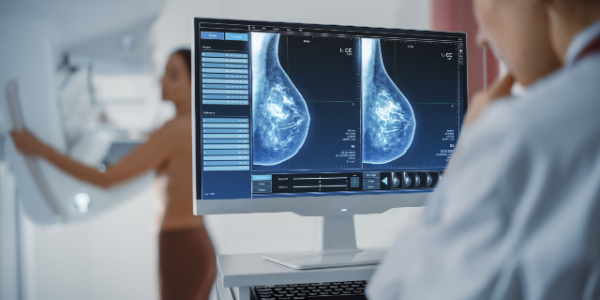Most women begin menopause in their late 40s or early 50s, with the risk of increased breast cancer peaking around the age of 70. A significant proportion of these breast cancers are fueled by overexpression of the Esr1 gene, leading to higher expression of related estrogen-signaling pathway genes that drive breast cancer development.
How Esr1 and Breast Cancer are Related
In a study using a mouse model of aging that mimics the development of breast cancer in estrogen receptor-positive postmenopausal women, researchers found that overexpression, or turning on, of the Esr1 gene could lead to an increased risk of developing estrogen receptors.
During human menopause, when total estrogen levels typically decline, some women’s breast tissue may show an increase in estrogen receptor expression levels or even increased levels of local estrogen production. To model this in mice, the researchers followed the mice as they aged through their natural reproductive cycle and circulating levels of estrogen decreased. They then looked at what factors were involved in the resulting cancers by comparing the results in mice designed to overexpress one of two different genes: Esr1, which would model the increase in estrogen receptor levels, or CYP19A1, a gene, which models the rise. They found that overexpression of Esr1 led to more breast cancer cases than overexpression of CYP19A1, and was accompanied by high activation of estrogen pathway genes.
In the second study, they gave the mice estrogen-suppressing drugs like tamoxifen and letrozole as a preventative measure to see if the drugs could fix the abnormal activation of estrogen pathway genes, which turned out to be the case.
Certain Other Genes May be Involved in Triggering Breast Cancer in Postmenopausal Women
The researchers were guided in their study by using the prediction tool PAM50 (Prediction Analysis of Microarray 50). The tool reads a sample of the tumor and determines the expression levels for a group of 50 genes. The scientists found that many genes related to breast cancer cell proliferation in the PAM50 tool were significantly expressed only in Esr1 mice, and this correlated with the development of the same type of estrogen receptor-positive breast cancer that develops in humans, thereby they provided new evidence that other genes may be involved in triggering breast cancer in postmenopausal women. In current clinical practice, the results of the PAM50 test have helped to predict the likelihood of metastasis in some ER-positive, HER2-negative breast cancers.
According to the researchers, one of the more important challenges in extrapolating the results from mice to humans is collecting breast cancer cells for testing with PAM50 or other prognostic tools. Removing breast tissue, even with a fine needle, is still invasive and perhaps unavoidable. However, they developed a method that requires only a few tumor cells to be removed from a small tissue sample, as this procedure expands the cells and multiplies them many times over, leaving enough cancer cells to pass through prognostic tools like PAM50.
The scientists hope that other researchers, including developers of commercial prognostic tools, will take note of this research advance and incorporate risk factors associated with some of the genes associated with Esr1 into their tools, potentially allowing women to better avoid overtreatment or provide more precise treatment.






